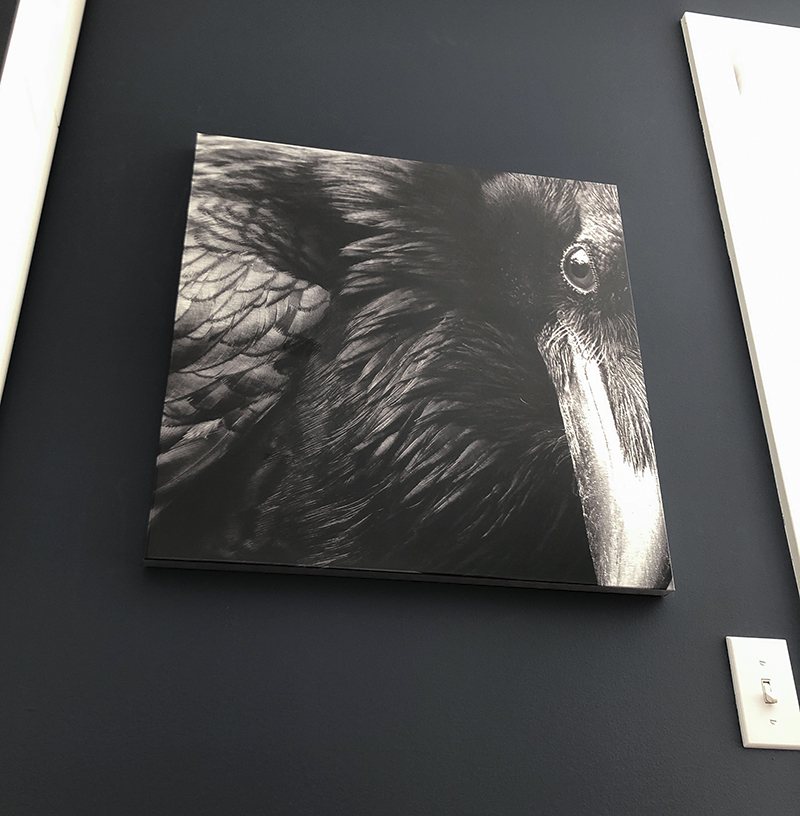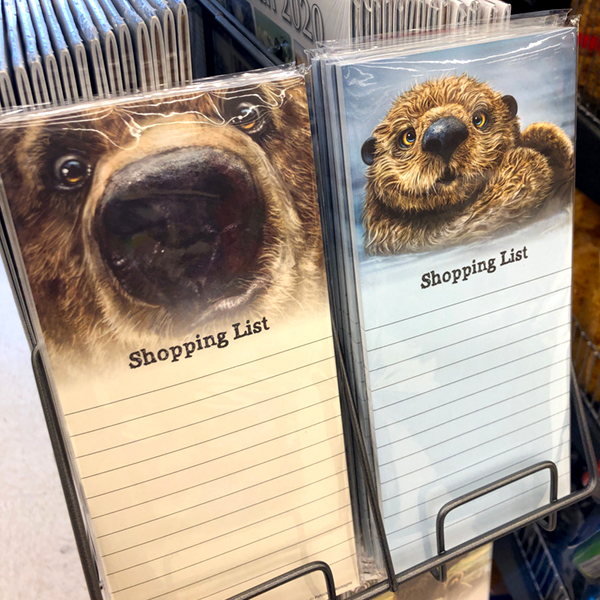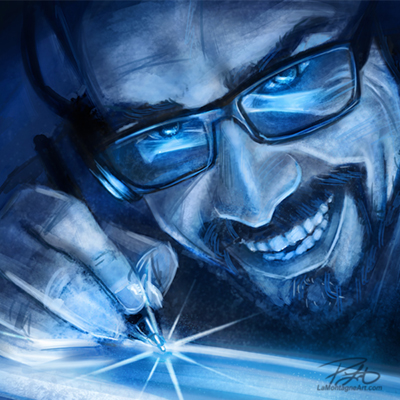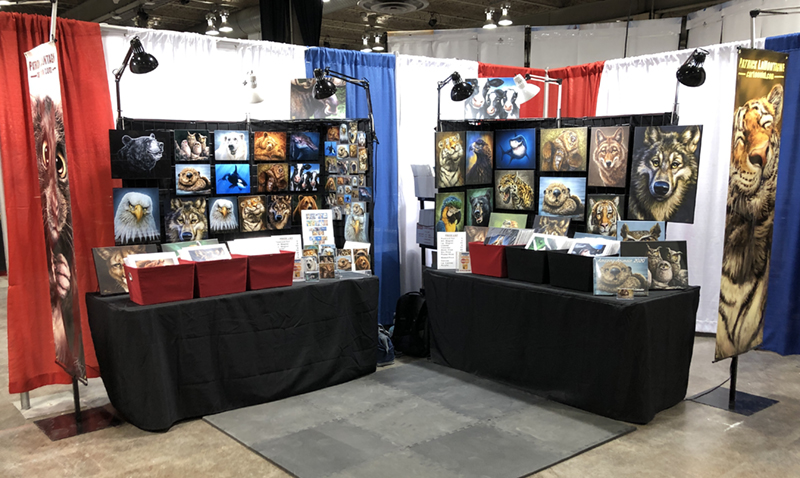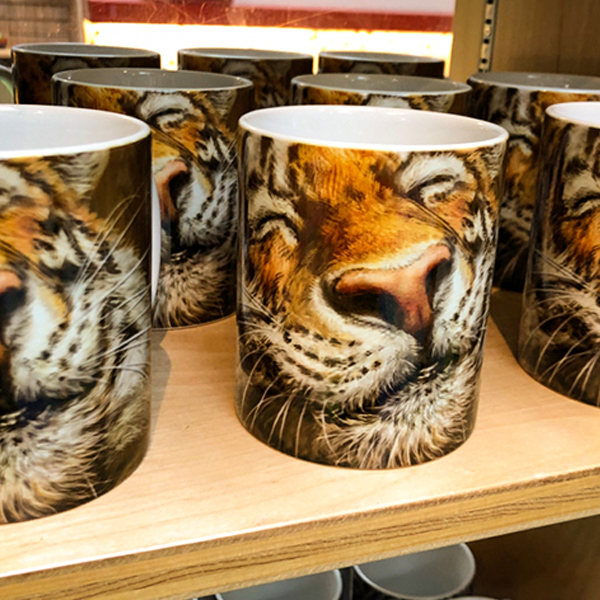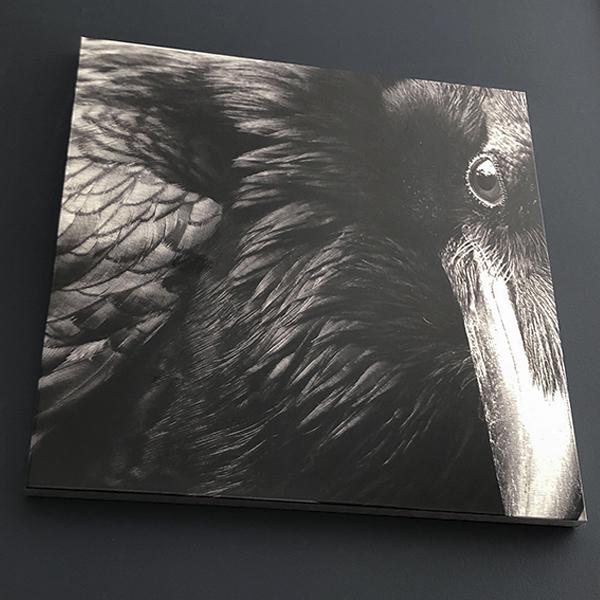
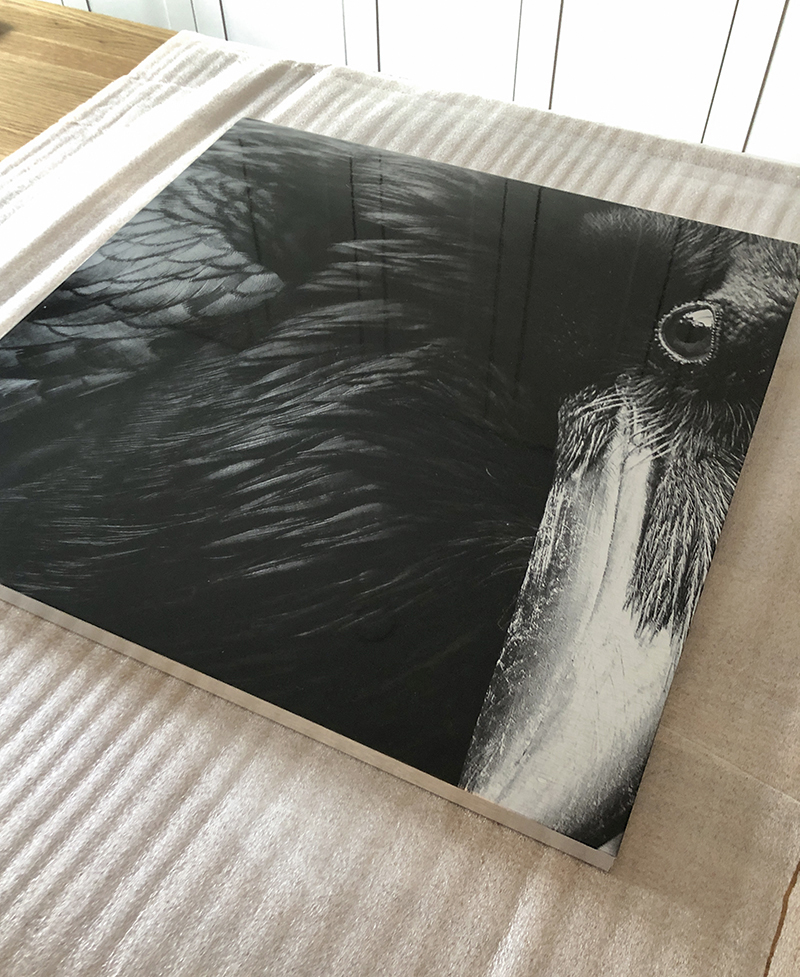
Shonna has discerning tastes when it comes to the art she likes.
Were we not together and she stumbled across my stuff somewhere, she wouldn’t buy it. The side benefit, however, is that she has a critical eye and if there’s something wrong in one of my paintings, she can spot it. It took me a long time to stop taking that personally and see it for the gift that it is.
That’s ironic, because had I not met her 30 years ago, odds are very good I wouldn’t be an artist for a living. The opportunities that made that possible, all the pieces lining up, were because I moved to the mountains in 1994 to save our failing long-distance relationship.
Aside from the pieces in my office and one outside my office door, we don’t have any artwork hanging in our home.
That seems to bother one friend of mine a great deal, but Shonna and I have always marched to our own beat. From choosing early on in our marriage not to have children, to the fact that we don’t celebrate holidays, we’re happy to be weird. Normal is overrated.
After 30 years together, coming up quickly on 25 years of marriage, clearly it’s working for us.
Shonna and I rarely do anything for our birthdays. We’ve never had a party for each other, nor wanted one. We never made it a thing, nor do we ever put pressure on each other to buy the perfect gift. In fact, we almost never buy each other gifts because a calendar says we should. She’s forbade me to buy her anything for Valentine’s Day, and we both loathe Christmas.
But today is Shonna’s 50th birthday and I wanted to do something special for her. We originally had some nice vacation plans this year. We wanted to have an adventure to mark her 50th, our 25th anniversary in a little over a month, and my 50th early next year, but I need not explain why all of that was cancelled.
As Shonna told another friend turning 50 this year, we’re taking a mulligan.
A few years ago, Shonna found a black and white photo online that really spoke to her. Art being what it is, it’s foolish to dissect why. Just as one song moves one person, but elicits a shrug from another, it’s personal.
It’s unlike her to be so struck by an image, so she found the photographer online, a Russian from Saint Petersburg with the pen name Key Gross. His black and white photography is quite stunning, expertly capturing urban scenes. But it was a square cropped raven with an unusual composition that Shonna fell for.
After a couple of fruitless attempts to contact him, she finally managed to have a dialogue. She told him how much she loved the photo and wanted to arrange to buy a print. Because of the difficulty of having it printed the size she wanted, shipped to Canada, and the fact that she just loved the image, he offered it to her for free, despite her willingness to pay.
He quite unexpectedly emailed her the file so she could print it herself. Given that she is married to an artist who has been ripped off more times than I can count, and the frustration of trying to maintain copyright protection in the digital age, she assured him we would only print it once and that the original file would never be shared.
ABL Imaging in Calgary has been doing my canvas and giclée prints for many years and I can’t speak highly enough about their quality and professionalism. We went to the shop together a couple of years ago to see about getting it done.
The problem, however, is that they have many options and Shonna was paralyzed by choice.
She hasn’t spoken about this photo since, obviously having given up on having anything done with it.
Shonna is incredibly tough to buy for. She doesn’t wear any jewelry, abhors dust gathering knick knacks, doesn’t collect anything, and if she wants something, she usually saves for it and buys it. I’ve learned over the years that the best gifts I can give her are simply supporting things she wants to do.
Our recent kitchen renovations (she’s an excellent cook), taking care of her car maintenance, cleaning the house, bringing her lunch to her when she forgets it, making a workout space for her in the basement when her gym closed for COVID, cleaning the house. It’s the little things that mean more than the stuff that money can buy.
Take note, newlyweds.
As it’s so rare for me to know for certain that Shonna will like or want something I might buy her, a couple of months ago, I talked to Ryan at ABL Imaging about finally getting that Raven printed.
I had measured a couple of places in the house where it might hang, to give Shonna some options. The image was 30cm each side, and I wanted to print it 22 inches. That meant some subtle Photoshop magic so it wouldn’t blur on the enlargement. Good thing I know a thing or two about that.

Ryan and I discussed how best to make the image pop and went with a boxed aluminum print. The brushed grain added some texture and a wonderful, raised relief effect on the feathers. ABL Imaging then sent it out for a professional automotive clear-coat that took it to another level. The print has real presence.
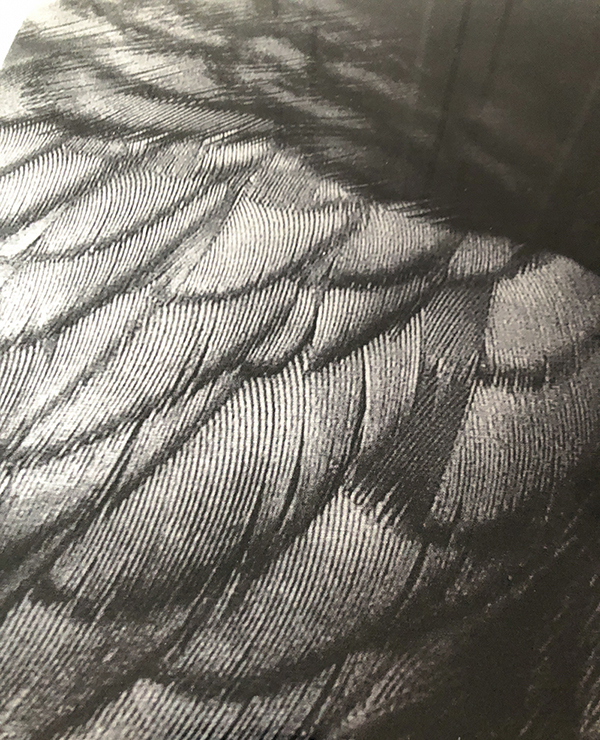 From a traditional point of view, the image breaks the rules of composition. The eye is generally the focal point of an animal photo or painting, but this one is off to the side. In fact, the feathers in the center of the piece are the sharpest part of the image, another rule broken. But the image works, it’s got character, life and proves that following the rules isn’t always what makes for a moving piece. That, and trying to please everybody is overrated.
From a traditional point of view, the image breaks the rules of composition. The eye is generally the focal point of an animal photo or painting, but this one is off to the side. In fact, the feathers in the center of the piece are the sharpest part of the image, another rule broken. But the image works, it’s got character, life and proves that following the rules isn’t always what makes for a moving piece. That, and trying to please everybody is overrated.
While Shonna did take the day off for her 50th, she still woke at 5am as we both usually do, and went to the gym while I worked. When she got home, I drove down to the bakery to get her a fresh cinnamon bun, a rare indulgence. After we ate those with our coffee, I gave her the gift, which for reasons I already mentioned, she wasn’t expecting.
Before she got it fully open, she asked “Did you get me my raven?”
She was thrilled.
As I wrote this in my office, she was busy with drywall anchors and searching for screws. I took a break midway through to help her line it up.
She hung it in her newly renovated kitchen.
(she told me to add, “and it looks fantastic!”)
© Patrick LaMontagne
Follow me on Instagram @LaMontagneArt
Sign up for my newsletter which features blog posts, new paintings and editorial cartoons, follow this link to the sign up form.

